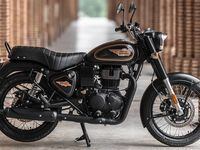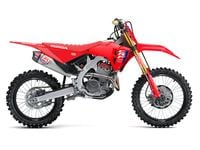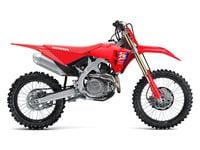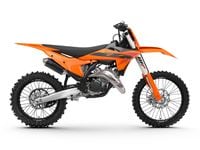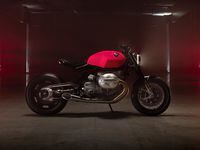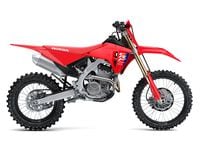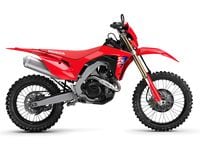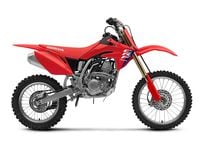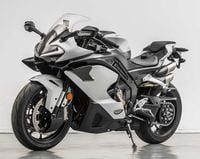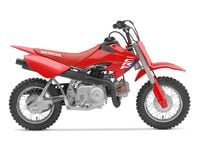Unlike steam or electric powerplants, piston internal-combustion engines cannot produce torque from zero rpm. That means they must first be started, and only then gradually connected—“clutched”—to the load. Although 98 percent of new U.S. autos have automatic transmissions, for motorcycles the ratio is the other way around: most bikes retain foot gearchange and a clutch operated by the left handlebar lever.
Modern motorcycle engines are of unit construction: powerplant, clutch, and gearbox are in one unit, with crankshaft and clutch geared together. It wasn't always so—British motorcycle engines and gearboxes were long separate, joined by bolting to engine plates. The clutch (mounted on the gearbox) was driven by a primary chain from a sprocket on the engine's crankshaft. A chaincase enclosed and protected the chain.
In a typical motorcycle clutch, the engine directly drives the clutch outer hub, which is a cylindrical drum roughly 6 inches in diameter. Its rim—perhaps 1-1/2 inches tall—bears inward-facing ribs or splines that engage matching tabs on the outside diameters of several annular discs faced with friction material—the friction plates.
RELATED: Why Engine-Braking Control For Motorcycles? And Why Now?
Centered in the outer hub is a separate inner hub, which is directly splined to the input shaft of the gearbox. It too is cylindrical, and its outer surface bears axial splines. Engaging those splines are another set of clutch discs known colloquially as “steels,” which are interleaved with the friction discs. Friction and steel discs alternate in the “stack,” the frictions keyed to the clutch outer drum, the steels splined to the inner drum.
This stack of clutch plates is topped by a spring-backed pressure plate that forces all the discs in the stack into frictional contact with one another. A mechanism uses the rider’s pull on the clutch lever to lift the pressure plate against its spring pressure, separating the friction and steel plates. When you have started the engine and wish to depart, you pull in the clutch lever, then click the transmission into first gear with your foot.
The spinning engine is turning the clutch outer drum and the five or more friction discs it drives. The inner clutch drum and the steel plates to which it is splined remain stationary because the act of putting the transmission into gear connects gearbox input and output shafts to each other. Because the bike is at rest, the rear wheel and everything connected to it—drive chain, plus both gearbox shafts—remain stationary.
To depart, you smoothly advance the throttle while with your left hand feeling for the “engagement point” —the lever position at which significant friction begins to occur between the friction discs (spinning with the engine and clutch outer drum) and the steel discs (splined to the clutch inner drum and connected to the stationary gearbox input shaft).
Increasing friction causes the steel discs to turn, slowly at first, then faster. They turn the inner hub, rotating the gearbox input shaft and the rear wheel, whose large torque—through a 10- to 15-to-one overall first-gear reduction between engine and rear wheel—accelerates your bike. The “slip phase” of starting is the process by which clutch friction forces the steel discs to gradually catch up with the outer drum and its friction discs. When slippage ceases, the drive has effectively become solid.
Motorcycle clutches have worked this way for a century, with variations. The lead photo shows the chain-driven four-spring clutch of a 1954 pre-unit Triumph 500, move on to a 1974 Norton Commando clutch, which employs a single diaphragm spring instead of the more common multiple coil springs, then leaps to that recent development, a 2019 Husqvarna FS 450 “slipper” clutch.
Slipper clutches were originally created to deal with engine braking in road racing. When a rider brakes and closes the throttle, the rear wheel, through chain, gearbox, clutch and primary drive, must spin the engine against its internal friction. As the bike, still braking, leans into a corner, this friction torque might exceed the grip of the rear tire, making it slide out or hop.
A slipper clutch uses the reverse torque of engine braking, acting through spiral ramps built into the clutch inner drum, to reduce clutch spring pressure. Essentially, when the momentum of the motorcycle pushes against engine braking, the forces act to “unscrew” the clutch, forcing the pressure plate to lift. This allows clutch slippage to take the place of tire slippage or hop, making the bike more stable.
Later it was realized that such spiral ramps could work both ways—to reduce clutch grip when the rear wheel drives the engine, and also to increase clutch grip when the engine drives the rear wheel. This so-called “assist” feature, by generating added pressure on the clutch stack, makes it possible to reduce lever pressure by 40 to 50 percent—a welcome result. Such slipper/assist clutches are to be found on many recent motorcycle models.
Today, all these secrets reside under that round bulge on your right-hand engine cover.
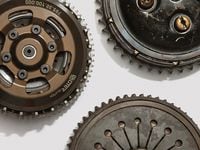
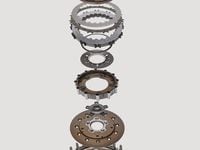
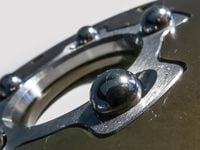

/cloudfront-us-east-1.images.arcpublishing.com/octane/N575KB7BDZDPPJBRLZRG2ANHKI.jpg)
/cloudfront-us-east-1.images.arcpublishing.com/octane/T77HXRXV4NGKDNZODMSEIBRXPE.jpg)
/cloudfront-us-east-1.images.arcpublishing.com/octane/NKMM7V2P3BCSXAV6J56FKK67OU.jpg)
/cloudfront-us-east-1.images.arcpublishing.com/octane/SWQRQV27DNFA7LXGFI7FNFNGOQ.jpg)
/cloudfront-us-east-1.images.arcpublishing.com/octane/GYEXUJBV5JGQLLZNXO7KRVSTEY.jpg)
/cloudfront-us-east-1.images.arcpublishing.com/octane/MCWUSJJVJVG45P7QQG3WOXZR54.jpg)
/cloudfront-us-east-1.images.arcpublishing.com/octane/AJ4EFPH2CRDURDAB5LPEA2V2NE.jpg)
/cloudfront-us-east-1.images.arcpublishing.com/octane/LSDHIL22SZAFFPYLKP5ZXLJSIY.jpg)
/cloudfront-us-east-1.images.arcpublishing.com/octane/SH46HIOX4RELXLXF6AE3SFGH4A.jpg)
/cloudfront-us-east-1.images.arcpublishing.com/octane/JUZ52WFWLJGMNH7PGZNOKP3MUY.jpg)
